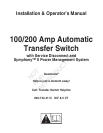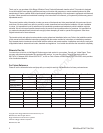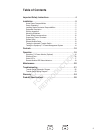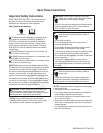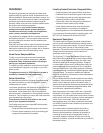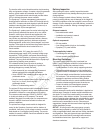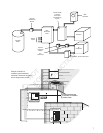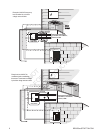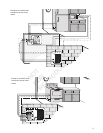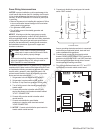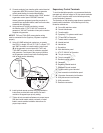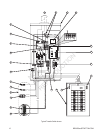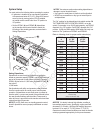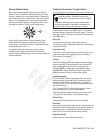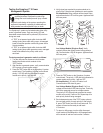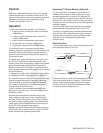5
Installation
We sincerely appreciate your patronage and have made
significant effort to provide for a safe, streamlined and cost-
effective installation. Because each installation is unique, it is
impossible to know of and advise the trade of all conceivable
procedures and methods by which installation might be
achieved. Neither could we know of possible hazards and/or
the results of each method or procedure.
For these reasons, only current licensed electrical
professionals should attempt system installations.
Installations must strictly comply with all applicable
codes, industry standards and regulations.
Your equipment is supplied with this combined “Installation
and Operator’s Manual”. This is an important document and
should be retained by the owner after the installation has
been completed.
Every effort has been made to make sure that the information
in this manual is both accurate and current. However, the
manufacturer reserves the right to change, alter or otherwise
improve the system at any time without prior notice.
Home Owner Responsibilities
To help you make informed choices and communicate
effectively with your installation contractor(s), read and
understand Owner Orientation before contracting or
starting your equipment installation.
To arrange for proper installation, contact the store at which
you purchased your equipment, your dealer, or your utility
power provider.
The equipment warranty is VOID unless the system is
installed by licensed electrical professionals.
Owner Orientation
The illustrations provided are for typical circumstances and
are meant to familiarize you with the installation options
available with your system.
Local codes, appearance, and distances are the factors that
must be considered when negotiating with an installation
professional. As the distance from the existing electrical
service increases, compensation in wiring materials must be
allowed for. This is necessary to comply with local codes and
overcome electrical voltage drops.
These factors will have a direct effect on the overall
price of your equipment installation.
Your installer must check local codes AND obtain permits
before installing the system.
• Readandfollowtheinstructionsgiveninthismanual.
• Followaregularscheduleincaringforandusingyour
equipment, as specified in this manual.
Installing Dealer/Contractor Responsibilities
• ReadandobservetheImportant Safety Instructions.
• Readandfollowtheinstructionsgiveninthismanual.
• Theinstallermayneedtoprovideappropriaterated
contactors based on loads to be controlled.
• Discusswithownertheirloadprioritypreferencesto
decide on remote module priority settings.
• Checkfederal,stateandlocalcodesandauthority
having jurisdiction, for questions on installation.
• Ensuregeneratorisnotoverloadedwithselectedloads.
If you need more information about the transfer switch, call
800-743-4115, between 8:00 AM and 5:00 PM CT.
Equipment Description
The transfer switch is designed to transfer selected loads
found in normal residential installations to standby power in
the event of a primary power outage. The load is connected
either to utility power (normal) or home standby power
(generator). The transfer switch monitors utility and generator
voltages and will automatically connect loads to the
appropriate source of power.
The Symphony™ II Power Management System is highly
flexible and utilizes individual high and low voltage modules
that can be mounted anywhere between the home’s main
distribution panel and the managed appliance. Designed
to communicate via your home’s existing power wiring, the
power demand and priority sequence of up to 8 appliance
loads are relayed back to the standby generator, effectively
preventing generator overload while expanding power range
and performance. The system is scalable and additional
relays can be added as a homeowner’s power management
needs change over time.
Only a licensed electrician should complete a home standby
installation. Service conduit and conductors can be wired
directly from the watt-hour meter to the transfer switch. A
separate service entrance disconnect and associated wiring
is not required when installed per applicable federal, state
and local codes, standards and regulations.
Major components of the transfer switch are a 2 pole utility
disconnect circuit breaker, a 2 pole generator disconnect
circuit breaker, a 2 pole double throw transfer switch, transfer
switch control circuit board, Symphony II power management
system control circuit board, fused utility terminals and
interconnecting wiring. All of these components are housed
in a NEMA 3R enclosure that is suitable for both indoor and
outdoor installations.
The transfer switch is solenoid-operated from utility or
generator inputs and contain suitable mechanical and
electrical interlock switches to eliminate the possibility of
connecting the utility service to the generator output. It
has ratings capable of switching full utility power into the
residence. In addition, a manual override lever is provided for
the transfer function.
NOT
FOR
REPRODUCTION



